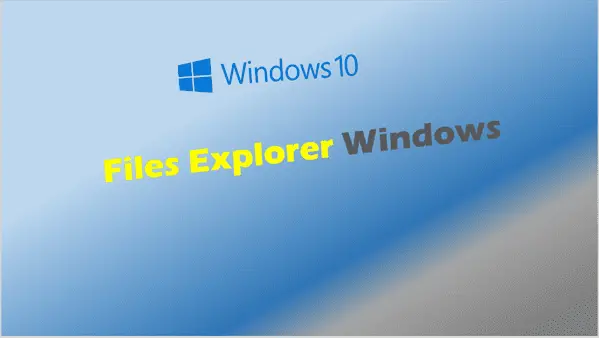Files Explorer Windows: (Navigate Like a Pro)
Files Explorer Windows. Files Explorer Windows is an indispensable tool for IT users and professionals, providing a versatile and efficient way to manage files and folders on various Windows operating systems.
It offers a user-friendly interface that makes navigating through your computer’s file system a breeze, while also providing advanced features for those looking to optimize their workflow.
In this comprehensive guide, we will explore the ins and outs of Files Explorer Windows, covering everything from its basic features and different versions to advanced techniques and troubleshooting common issues.
Whether you’re an IT professional seeking to enhance your file management skills or an everyday user wanting to make the most of this powerful tool, our expert insights will help you unlock the full potential of Files Explorer Windows.
Introduction
As an IT user or professional, you know that Files Explorer Windows is an essential tool for managing files and folders on your computer. This comprehensive guide will help you unlock the full potential of Files Explorer Windows by exploring its various features, learning advanced techniques, and troubleshooting common issues. Get ready to enhance your productivity and become a master of file management.
Files Explorer Windows: An Overview
Files Explorer Windows, or Windows Explorer, is the default file management application for Microsoft Windows operating systems. Its purpose is to help you browse, organize, and manage files and folders on your computer with ease. Throughout the years, Files Explorer Windows has evolved, with each new version of Windows introducing new features and improvements.
File Explorer Windows 10
Windows 10 brought several enhancements to Files Explorer Windows, such as the Quick Access view, improved search functionality, and better integration with cloud storage services like OneDrive. In this section, you will learn how to:
- Show hidden files: Click on the ‘View’ tab in the File Explorer menu, then check the ‘Hidden items’ box to reveal hidden files and folders.
- Delete files: Select the files you want to delete, right-click on them, and choose ‘Delete’ or press the ‘Delete’ key on your keyboard.
- Search for multiple files: In the search bar, type in your keywords separated by “OR” (e.g., “keyword1 OR keyword2”) to search for multiple files at once.
Additionally, if you experience issues with Windows Explorer search not finding files or not searching within files, you can:
- Rebuild the search index: Open the ‘Control Panel’, go to ‘Indexing Options’, click on ‘Advanced’, and then click on ‘Rebuild’ to rebuild the search index.
- Modify the search settings: In File Explorer, click on the ‘Search’ tab, then choose ‘Advanced options’ to modify the search settings according to your preferences.
File Explorer Windows 10 Download
To download and install File Explorer for Windows 10, simply update your Windows operating system to the latest version through Windows Update. For optimizing your usage, consider customizing the Quick Access view, using keyboard shortcuts, and configuring the File Explorer to open “This PC” by default.
File Explorer Windows 11
The latest version of Files Explorer Windows, Windows 11, introduces a modernized design, new features like Snap Layouts and Snap Groups, and improved performance. In this section, you will learn how to:
- Use the new file path options: In Windows 11, you can use the new ‘Copy as path’ feature by right-clicking on a file or folder and selecting ‘Show more options’ > ‘Copy as path’.
- Move files: To move files in Windows 11, simply drag and drop the files to the desired location, or cut and paste them using keyboard shortcuts (Ctrl+X and Ctrl+V).
To remove Creative Cloud files from Explorer Windows 11, open the Creative Cloud desktop app, go to ‘Settings’ > ‘Files’, and turn off ‘Show Creative Cloud Files in File Explorer’.
File Explorer Windows 11 Download
To download and install File Explorer for Windows 11, ensure that your computer is running the latest version of Windows 11 by checking for updates in the Windows Update settings. To optimize your usage, try using the new Snap Layouts and Snap Groups features to better manage your open windows.
File Explorer Download
For various Windows versions, download the latest version of Files Explorer Windows by keeping your operating system up-to-date through Windows Update.
File Explorer Windows 7
Files Explorer Windows 7 offers basic file management features but lacks the improvements and optimizations found in newer versions. It is recommended to upgrade to a more recent version of Windows for a better user experience.
Advanced File Explorer Techniques
As an IT user or professional, you can benefit from advanced techniques in Files Explorer Windows to maintain an organized and efficient file system. In this section, you’ll learn how to:
- Hide files: To hide files or folders, right-click on the item, select ‘Properties’, and check the ‘Hidden’ box under the ‘Attributes’ section. Click ‘OK’ to apply the changes.
- Delete files: To permanently delete files without sending them to the Recycle Bin, select the files, hold the ‘Shift’ key, and press ‘Delete’ on your keyboard.
- Find large files: To find large files on your computer, use the search bar in File Explorer and type “size:gigantic” to display files larger than 128 MB.
Troubleshooting Common Issues
Occasionally, you may face issues when using Files Explorer Windows. In this section, we’ll provide solutions to common problems:
- Excel files opening in Internet Explorer: Open Excel, go to ‘File’ > ‘Options’ > ‘Advanced’, scroll down to the ‘General’ section, and uncheck ‘Ignore other applications that use Dynamic Data Exchange (DDE)’. Click ‘OK’ to save the changes.
- Stop PDF files from opening in Internet Explorer: Open Adobe Acrobat Reader, go to ‘Edit’ > ‘Preferences’ > ‘General’, and uncheck ‘Enable Protected Mode at startup’. Click ‘OK’ to save the changes.
Conclusion
Files Explorer Windows is a powerful tool that can significantly enhance the way you manage files and folders on your computer. By exploring its various features, learning advanced techniques, and troubleshooting common issues, you’ll be well-equipped to maximize your productivity as an IT user or professional. Now that you have this comprehensive guide at your fingertips, dive in and unlock the full potential of Files Explorer Windows today!
Related Posts to Files Explorer Windows:
- Where is File Explorer in Windows 10
- Windows Explorer not responding
- Remove OneDrive from File Explorer
More Information:






